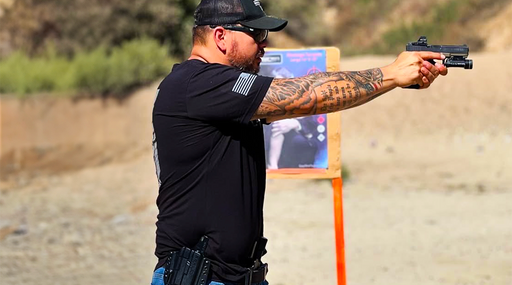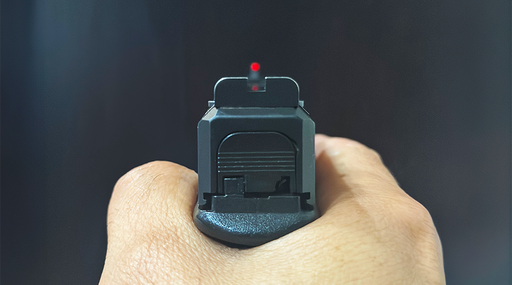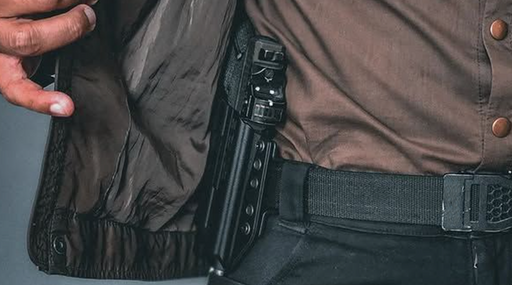The ole access versus safety dilemma
If you normally carry close to your body, say on an ankle or IWB, multiple layers can make it time-consuming to get to your gun. Moving it to a coat pocket is a tempting prospect, and not necessarily to be ruled out, if the firearm is in a gun holster of some type that covers the trigger guard and prevents the gun from turning in space. Regardless of where it’s carried, a handgun should be properly indexed in concealment so that you always know where the grip is without having to fiddle around.
It should go without saying that the pocket occupied by a gun and holster should, ideally, contain nothing else. Of particular concern are objects like keys, pens, and lip balm containers that can potentially work their way into the trigger guard and impede drawing the handgun.
Choosing coats and jackets for concealment or range work
DO: look for a coat that has a two-way zipper, that is, one with two pull tabs such that it can be unzipped from the bottom up. This design has many advantages; the primary one for shooting is easier access to your gun because the bottom of the coat is open. With the middle, and maybe the upper portion of the zipper still fastened, you’ll stave off wind and chill. This manner of wear also keeps the jacket from slipping off your shoulders as some materials will do when the garment is fully open for easier access to the gun and gun holster.
Another advantage to the two-way zipper system is that it makes overheating and sweating during bursts of exercise less likely. The increased airflow is often just enough to maintain comfort during active range sessions, without shedding the jacket completely and then inevitably catching chill when exercise stops.
DON’T: select a jacket that has drawstring toggles, if it can be avoided. There are too many instances of these accessories, useful as they are in wearing a coat, being caught inside the trigger guard. When the gun is inserted into the holster, an unintended BANG, followed by trauma to the leg, can follow.
Safe reholstering practices can prevent this from happening. That’s shown in a photo that accompanies this article, as my own frigid-weather coat has a drawstring at the waist. If you ever feel resistance while reholstering, STOP and inspect the situation before shoving the gun into the device and potentially causing injury or worse.
Critical moments: drawing and reholstering
If it’s not already been made clear, drawing and reholstering safely are of paramount concern when bulky clothing is worn. By far the most common error I encounter as an instructor is the flagging of one’s own support-side hand by the muzzle when clearing a garment out of the way.
For drawing, a sweeping motion with the strong-side thumb of a jacket that opens in front, followed by a hasty draw, is quite effective and safe. For pullover-style outerwear, it’s best to lift the covering garment out of the way using the support-side hand, assuming a two-handed grip only when the gun is oriented in the direction of the target.
Reholstering is really the biggest point of concern, for reasons I’ll reiterate here: many shooters muzzle their own hand when reholstering. This dangerous practice is made even more so when a bit of clothing dangles around the holster opening.
A rigid holster that stays in place and at a consistent angle, like any made by Bravo Concealment, secured in place with a taut belt that’s an appropriate width for any holster loops, is the easiest solution for shooters who have been unintentionally flagging the support hand. The assistance of the free hand should not be needed when returning the gun to a stable holster. By the same taken, never use the muzzle as a “fishing tool” for getting into the holster! Muzzling one’s own vital organs is not a solution.
In the case of IWB holsters, for some models, and some body types, the best and safest method of reholstering is removing the holster entirely with the support hand, and then placing the open end of the holster in front of the muzzle and inserting the gun with the support hand well above the muzzle.
For other holsters, including the OWB model shown in the pictures here, I find it easiest to tuck as many layers as possible into my belt, which mostly keeps them from obstructing the holster. As an alternate or additional precaution, with the gun pointed downrange, place the support hand flat against your ribcage and draw the hand upward and toward your middle. Hold the garment tight to your body while reholstering. This prevents both safety errors.
Enjoy cold-weather carry and training—safely!
It’s the intent of this article to remind you of safe techniques for cold weather carry and gun handling. Don’t read into it any form of discouragement to carry and practice with your gun. The gun that’s left at home or in the car does you no good when its life-saving qualities are needed. The more you train under less-than-ideal circumstances, like nasty weather and in heavy clothing, the better!
Gloves in the accompanying photos are the Fury Utilitarianedition by Blackhawk!.

Eve Flanigan is a defensive shooting and concealed carry instructor living in the American Southwest. Today she works full time as an instructor and writer in the gun industry. Flanigan loves helping new and old shooters alike to develop the skills needed to keep themselves and their loved ones safe.
























Leave a comment